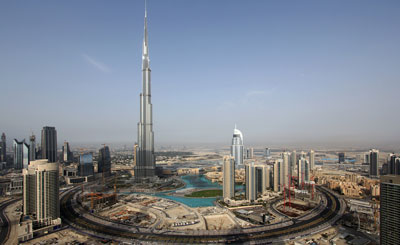Saudi Arabia warned financial assets may be drained within five years

The IMF has warned that regional economies could burn through their financial buffers within five years as they face a $700 billion deficit.
The fund lowered its projection for Gulf growth to 3.3 per cent this year, down from a 3.4 per cent projection in May, as lower oil prices batter the region.
It expects regional growth to slow further next year to about 2.8 per cent.
“For most countries, the fiscal measures currently being considered are likely to be inadequate to achieve the needed medium-term fiscal consolidation,” said the IMF in its report. “Apart from Kuwait, Qatar and the United Arab Emirates, under current policies, countries would run out of buffers in less than five years because of large fiscal deficits.”
As the international oil benchmark Brent plummets to about $50 per barrel, down from last year’s peak of $115 per barrel, fiscal deficits are ballooning across the region.
The IMF expects the Gulf fiscal deficit to reach 13 per cent of GDP this year, compared to a deficit of 8 per cent it forecast in May.
“Based on our projection of oil prices and government spending plans by 2020 they will still be running a deficit of 8 per cent of GDP,” said Masood Ahmed, director of the IMF’s Middle East and Central Asia department at a press conference in Dubai.
Gulf countries are projected to have a combined fiscal deficit exceeding $700bn between 2015 and 2019.
Unlike other Gulf countries, the UAE is expected to run a fiscal deficit of about 5.5 per cent of GDP this year, with further deficits in 2016 and 2017 and then achieve a balance thanks to its diversified economy. Saudi Arabia, on the other hand, faces budget deficits over the next five years.
Saudi Arabia, the world’s biggest oil exporter, is forecast to run a fiscal deficit of 20 per cent of GDP this year, according to IMF projections.
The kingdom has drawn down its foreign currency reserves and issued domestic debt to finance the deficit. Its reserves were down to 2.48 trillion Saudi riyals (Dh2.42tn) in August, a 31 per cent drop from the peak of 2.79tn riyals reached in August of last year.
“Countries with fiscal space are using their buffers appropriately, but medium-term plans to put fiscal finances on a stronger footing are lacking, including in those countries with the largest adjustment needs,” said the IMF.
The IMF has urged Gulf countries to adjust to the new oil price and implement a slew of measures to deal with the new realities that include more entrants to the job market.
These measures include the streaming of expenditures, raising non-oil taxes, reducing subsidies and bolstering private sector growth.
“Lower oil prices will lead governments to slow public spending, underscoring the need for policies to support a diversified private sector,” the IMF said. “About 10 million people are expected to enter the labour force in Menap (Middle East North Africa Afghanistan and Pakistan) oil exporters by 2020, while cash-strapped governments will have limited room to create public-sector jobs.”
More than 2 million nationals will enter the Gulf job market by 2020, excluding the UAE. If private sector growth does not pick up, more than half a million people will be jobless, in addition to the 1 million currently unemployed. In this case, the Gulf’s aggregate unemployment rate could go up to 16 per cent from 12.75 per cent.
“Lower oil prices will eventually force governments of oil exporters to hire fewer public servants,” said the IMF.
“Clearly, if more fiscal adjustment were to take place, with some of it in the form of reined-in public sector hiring, unemployment rates would be even higher.”
Source: TheNational – Saudi Arabia warned financial assets may be drained within five years





























